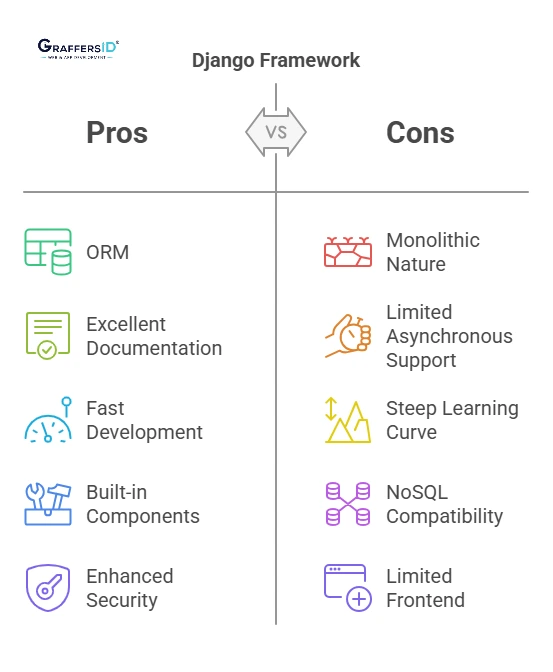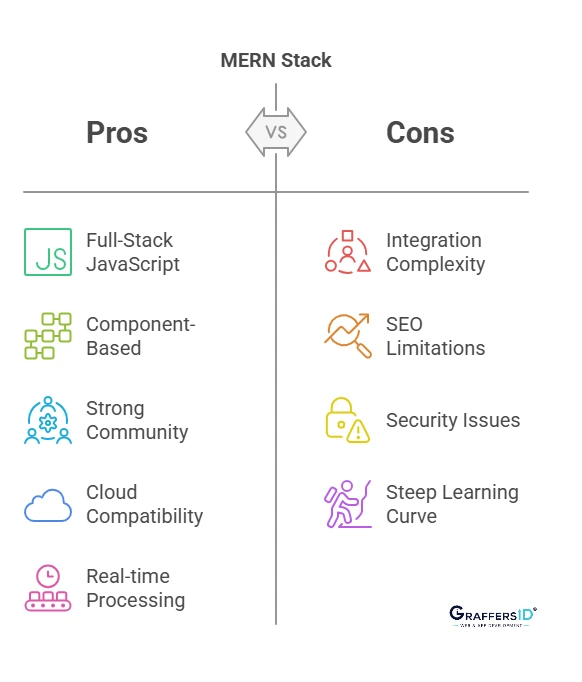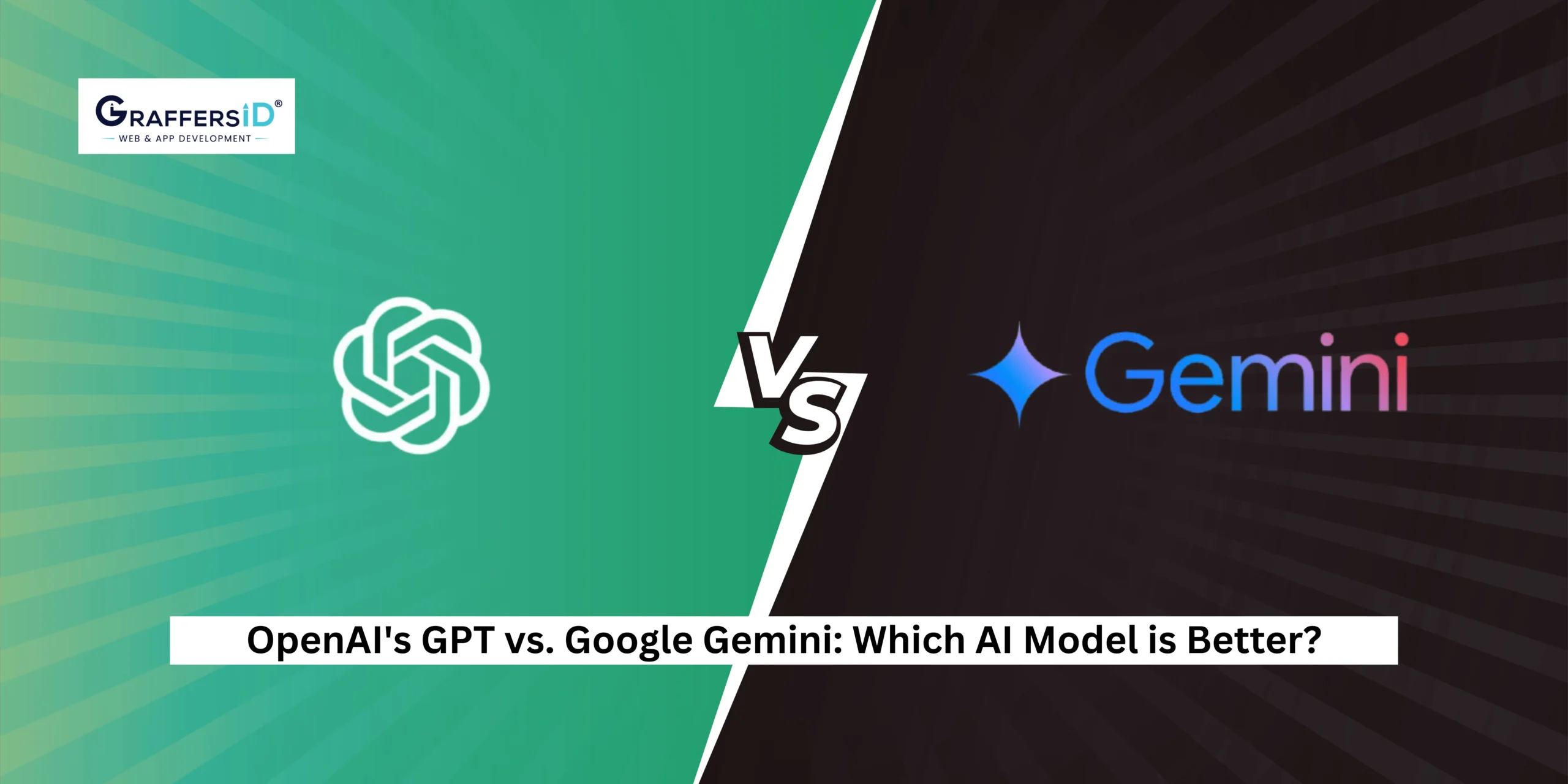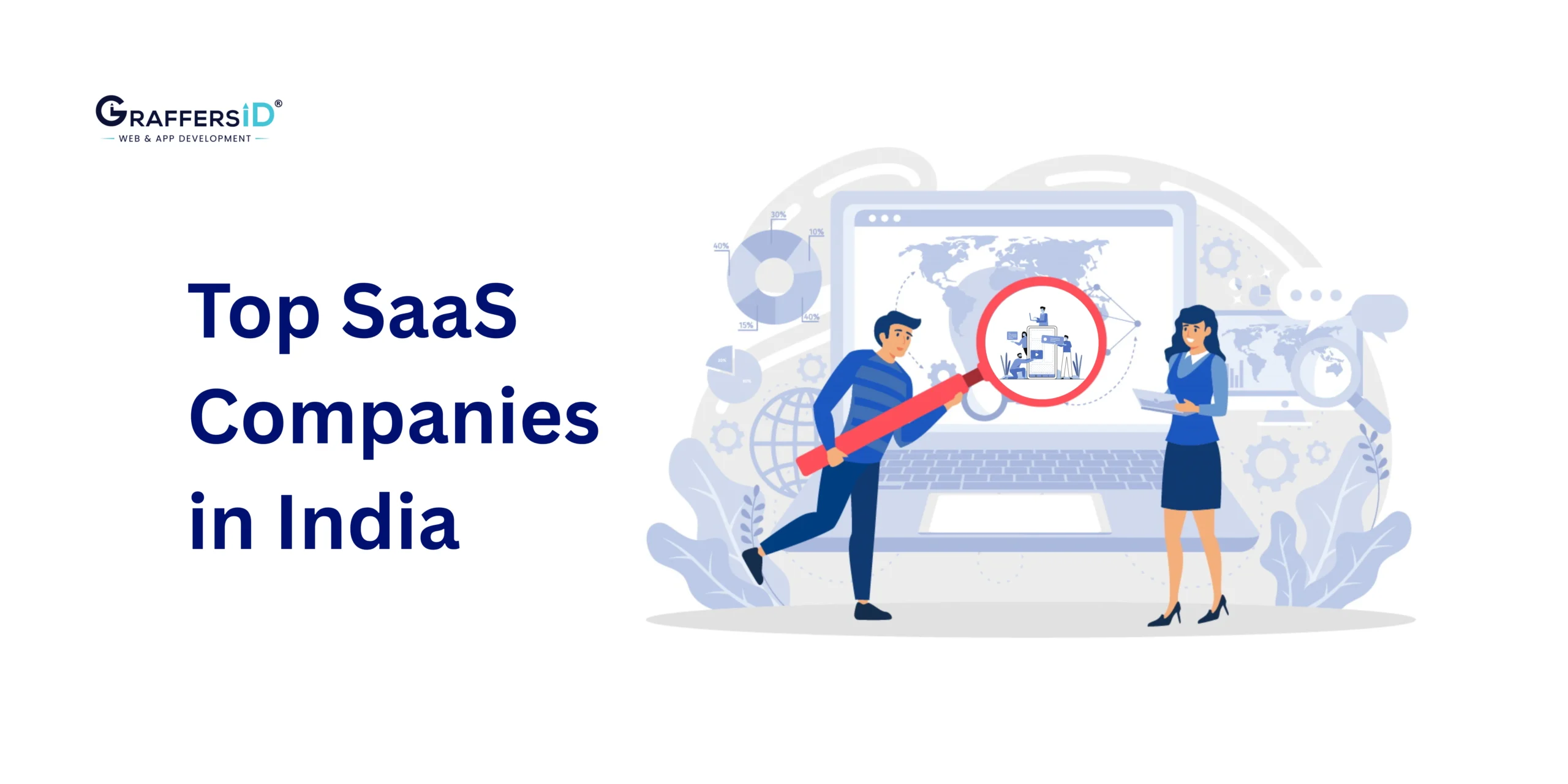The landscape of web development is continuously changing, and in 2025, developers are presented with a variety of technologies and stacks to choose from. Among the most popular and widely used stacks are MERN Stack and Django. Both of these technologies have gained significant popularity over the years, but the question remains: Which one is better for your next project? In this article, we’ll discuss MERN Stack vs. Django in detail, discussing their features, advantages, and differences to help you make an informed decision.
What is Django?

Django is an open-source, high-level web framework for Python, designed to make web development faster and easier. Launched in 2005, Django emphasizes rapid development, security, and scalability. It follows the Model-View-Template (MVT) architectural pattern, making it a popular choice for building robust web applications.
The framework is known for its “batteries-included” philosophy, which means it provides many essential features out of the box, such as authentication, an admin panel, and ORM (Object-Relational Mapping) for database handling.
- ORM (Object-Relational Mapping): Django’s ORM allows developers to interact with databases using Python code, abstracting away SQL queries.
- Excellent Documentation: Django’s extensive documentation is one of its key selling points, helping developers get up to speed quickly by finding whatever function they need in the well-established library.
- Fast Development: Django is renowned for its “batteries included” philosophy, providing a plethora of built-in features that accelerate development. Features like the admin interface, authentication system, and Object-Relational Mapping (ORM) facilitate the creation of robust applications in less time.
- Built-in Components: Django offers a rich set of built-in components that simplify various aspects of development. From handling user authentication to managing database models, these pre-built components save developers from writing repetitive code and speed up the development process.
- Enhanced Security: Security is a top priority in Django. It includes built-in protections against common web vulnerabilities like SQL injection, cross-site scripting (XSS), and cross-site request forgery (CSRF). This makes it an excellent choice for applications that need to handle sensitive user data.
- Open Source: Django is a framework for free and open-source web applications. It is free and accessible to everyone. It is possible to obtain the source code from the public repository. The overall cost of creating an application is reduced by using open source.
- Vast and Supported Community: A large and dedicated user community of great Django developers contributes their time and knowledge to build, improve, and patch the software foundation. By utilizing the thoughtful packages freely available to everyone building with Django, your application can profit from this commitment.
- Scalability: Django’s architecture supports horizontal scalability, allowing applications to handle increased traffic by adding more servers to the system. Additionally, Django Channels enable the development of real-time features, enhancing the user experience.

Limitations of Django
While Django remains a powerful, secure, and scalable web framework in 2025, it’s not without its limitations. Like any technology, Django comes with trade-offs that developers should understand before committing to it for a project.
Below are some limitations of Django, categorized into technical, architectural, and practical concerns:
- Monolithic Nature: While Django’s comprehensive features are advantageous, they can lead to monolithic applications where all components (models, views, templates, middleware) are tightly coupled within a single project. Thus, it becomes complex to maintain as the project grows.
-
Limited Asynchronous Support: Though Django has introduced asynchronous capabilities in recent versions (starting from 3.1 onwards), it still doesn’t offer complete async support across all components. Django’s ORM, middleware, and many third-party packages remain synchronous. This becomes an issue for applications requiring real-time interactions.
- Steep Learning Curve for Beginners: Django’s extensive feature set and conventions can overwhelm beginners. Understanding Django’s layered architecture, middleware system, routing, model relationships, and built-in admin functionality requires a steep learning curve. This can become a challenge for junior developers or small startups that lack experienced backend developers, slowing down project initiation and increasing dependency on documentation or mentorship.
-
Limited Compatibility with NoSQL Databases: Django is tightly coupled with relational databases like PostgreSQL and MySQL. While there are workarounds to use MongoDB, they often involve third-party tools that lack full ORM integration. This limits Django’s adaptability for applications needing schema-less or document-based data storage.
-
Limited Frontend Capabilities: Django uses a templating engine for server-side rendering, which is effective for traditional web applications but lacks the interactivity modern users expect. Creating highly dynamic, single-page applications (SPAs) with Django alone is difficult. To build modern, interactive user interfaces, developers must integrate Django with frontend libraries or frameworks such as React, Vue.js, or Angular.
Read Also: Django vs NodeJS: Which Is Better?
Is Django a Full-Stack Framework?
When evaluating modern web development tools in 2025, many developers wonder: Is Django a full-stack framework? The answer is yes.
What is a Full Stack Framework?
A full-stack framework refers to a development tool or set of tools that enables developers to build both the frontend (client-side) and backend (server-side) of a web application. This includes:
-
Handling business logic (server-side code)
-
Database management and ORM
-
Templating or rendering views for the user
-
User authentication, security, and routing
A full-stack framework allows you to build an entire web application without the need for external tools, at least for the core functionality.
Why Django is Considered a Full-Stack Framework
Django checks all the boxes needed to qualify as a full-stack framework:

1. Backend Capabilities
-
Django is written in Python and is primarily known for its robust backend functionalities.
-
It offers an integrated ORM (Object Relational Mapper) that supports multiple databases such as PostgreSQL, MySQL, SQLite, and Oracle.
-
With built-in features like routing, middleware support, and query handling, it efficiently handles backend operations.
2. Frontend Support via Template Engine
-
Django comes with its template engine, allowing developers to write dynamic HTML pages using a templating language.
-
It supports conditionals, loops, filters, and includes to render data dynamically into web pages.
-
While it’s not as dynamic as React or Vue.js, for many applications, Django’s templating system is more than sufficient.
3. Built-in Admin Panel
-
One of Django’s most well-known full-stack features is its auto-generated admin interface.
-
This allows for managing users, data, and content through a secure, customizable interface without writing frontend code.
4. Form Handling
-
Django provides robust tools for form creation, validation, and rendering.
-
It handles everything from rendering HTML forms to validating data and saving it to the database — a vital frontend-backend interaction.
5. User Authentication and Authorization
-
Django has out-of-the-box user authentication, including login, logout, registration, and permission management.
-
This is a common feature developers have to build themselves in partial-stack environments.
Django is absolutely a full-stack framework- it allows developers to build full-featured web applications using a single technology stack (Python). It handles everything from the database to the user interface, including admin interfaces, security, and session management.
However, in modern applications where user interactivity and dynamic UI are critical, developers often pair Django with a frontend framework. So, while Django can do it all, many choose to use it in a more API-driven backend role in 2025.
Read Also: Best Frontend Frameworks For Web Development
What is the MERN Stack?

MERN stands for MongoDB, Express, React, and Node, forming a full-stack JavaScript solution. Unlike Django, which is a single framework, MERN Stack represents a combination of different technologies, each of which brings a unique capability to the stack.
-
MongoDB is a NoSQL database that stores data in JSON-like documents, making it highly scalable and flexible.
-
Express.js is a lightweight web application framework for Node.js, handling HTTP requests and responses.
-
React is a powerful front-end library for building user interfaces, particularly Single Page Applications (SPAs).
-
Node.js is a JavaScript runtime environment that enables developers to build server-side applications using JavaScript.
Features of MERN Stack
- Full-Stack JavaScript: MERN Stack enables developers to write both the frontend and backend of the application in JavaScript. This streamlines development by reducing the need to learn multiple languages and allows for faster development cycles and smooth data transfer between the frontend and backend.
-
Component-Based Architecture with React: React.js, the frontend library in the MERN stack, is known for its reusable component-based structure. This allows for enhanced code reusability, easier testing, and maintenance.
-
Strong Community and Ecosystem: Each technology in the MERN Stack has an active open-source community, ensuring continuous updates, plugin availability, and community-driven support. In 2025, this community support translates to faster problem resolution and enhanced tooling.
- Cloud compatibility and high scalability: MERN stack includes the Node.js framework for maximizing processing power and MongoDB, a NoSQL database that works incredibly well with cloud storage. As a result, the platforms’ collected data may be conveniently controlled from anywhere in the world.
- Security: It can connect all MERN stack apps to reliable hosting companies. By doing this, cyberattacks are avoided, and data security is maintained.
- Real-time Data Processing: The MERN stack is well-suited for building real-time applications due to technologies like WebSockets and the event-driven architecture of Node.js. This makes it suitable for applications that require live updates and interactivity.
- Flexibility and Customizability: The MERN stack’s modular approach allows developers to choose the best tools for each component—MongoDB for the database, Express.js for the server, React for the front end, and Node.js for the runtime environment. This flexibility enables tailoring the stack to specific project requirements.
-
Strong Community and Ecosystem: Each technology in the MERN stack is backed by large, active open-source communities. This enables a wide range of learning resources, libraries and plugins, and templates, fast troubleshooting, ongoing innovation, and updates.
Hire pre-vetted remote MERN Stack developers from GraffersID to accelerate your development and launch faster with confidence.

Limitations of MERN Stack
Despite its popularity and flexibility, the MERN Stack also comes with certain limitations that developers and businesses must be aware of when choosing it for application development.
- Integration Complexity: While the flexibility of the MERN stack is an advantage, it can also be a challenge. Integrating and configuring different components might be intricate, especially for developers who are new to the stack. A deep understanding of each component’s role is essential to ensure smooth interactions.
- SEO Limitations: React-based applications often operate as Single Page Applications (SPAs), which can be problematic for SEO since content is loaded dynamically. Although solutions like Next.js or server-side rendering (SSR) exist, they introduce additional complexity in deployment and development.
- Security Issues: While the MERN stack doesn’t inherently compromise security, it places the responsibility of ensuring security largely on the developers’ shoulders. Properly configuring and securing each component is crucial to avoid vulnerabilities.
-
Steep Learning Curve for Beginners: Although JavaScript is used throughout, each technology in the stack — React, Node, Express, MongoDB — comes with its learning curve. Understanding asynchronous programming, state management, routing, and NoSQL database modeling can be overwhelming for beginners or small teams
MERN Stack vs. Django: Key Differences
| Feature | Django (Python) | MERN Stack (JavaScript) |
| Language | Python | JavaScript |
| Architecture | MTV (Model-Template-View) | Component-based (React + Express) |
| Database | SQL-based (PostgreSQL, MySQL, SQLite) | NoSQL (MongoDB) |
| Development Speed | Faster with built-in tools | Flexible but requires setup |
| Performance | Excellent for CPU-bound tasks | Better for I/O-bound, real-time apps |
| Scalability | Enterprise-grade | Ideal for microservices and SPAs |
| Learning Curve | Easy for Python devs | Easy for JS devs, steeper setup |
| Admin Interface | Built-in | Needs to be custom-built |
| API Integration | Django REST Framework (DRF) | Native REST/GraphQL with Node.js |
MERN Stack vs. Django: A Detailed Comparison
Selecting the right tech stack for web development is a crucial decision that can significantly impact your project’s success and long-term maintainability. Each stack comes with its own set of advantages and drawbacks, making the choice dependent on factors such as project complexity, performance, and scalability requirements.

1. Performance
Django: Performs well for CPU-intensive and complex applications due to Python’s readability and efficient ORM. It is highly performant in monolithic and structured applications.
MERN Stack: Can outperform Django in real-time data handling scenarios like chat apps, live collaboration tools, and streaming platforms, thanks to Node.js’s non-blocking architecture.
2. Scalability
Django: Supports horizontal scaling, but scaling large apps may require breaking the monolithic structure into microservices.
MERN Stack: Node.js’s non-blocking I/O and the flexibility of the MERN stack components make it well-suited for horizontal scaling, allowing applications to handle increased traffic by adding more servers.
3. Database Performance
Django: Django’s ORM offers automatic query optimization and caching, leading to optimized database performance. However, complex queries might require manual optimization for maximum efficiency.
MERN Stack: MongoDB, used in the MERN stack, is a NoSQL database that excels in handling large volumes of unstructured data. Its flexible schema can lead to fast read operations, but complex queries can be challenging to optimize.
4. Language and Learning Curve
Django: Requires proficiency in Python, which is beginner-friendly and widely used in AI/ML, data science, and academia.
MERN Stack: Requires knowledge of JavaScript, including ES6+, React, Node.js, and asynchronous programming concepts like promises and callbacks.
5. Security
Django: It has built-in features like protection against SQL injection, XSS, CSRF, user authentication, and a permission system.
MERN Stack: Requires manual implementation of most security layers. Developers must integrate tools like Helmet, JWT, OAuth, and data validation mechanisms explicitly.
6. Development Speed and Productivity
Django: Speeds up development with its ready-to-use components, easy setup, and admin dashboard for managing data models.
MERN Stack: Offers greater control and flexibility, but can be time-consuming to configure all components for a new project.
Which to Choose?

-
Choose Django if you need rapid development, built-in security, a robust admin panel, and are working on data-driven or enterprise applications, especially in finance, healthcare, or internal business tools.
-
Choose MERN Stack if you’re building interactive, real-time, and scalable web apps with dynamic UIs, and prefer full JavaScript development for both frontend and backend.
Read Also: Most Popular Backend Languages
Can MERN Stack and Django Be Used Together?
Yes, MERN Stack and Django can be used together in a single project, although they are based on different programming languages and paradigms. Combining them can leverage the strengths of both, such as Django’s powerful backend features and React’s rich front-end capabilities.
However, integrating these two technologies typically means replacing the Node.js + Express backend in the MERN stack with Django, and continuing to use React for the frontend and MongoDB or another database that Django can support. This setup results in a hybrid architecture, often known as a decoupled frontend-backend architecture.
Best Practices for Integrating MERN Stack and Django
Combining Django and React (from the MERN stack) requires thoughtful architecture planning. Here are the best practices to follow for a successful integration:

-
Use Django as an API Backend: Build RESTful APIs with Django REST Framework. React can fetch data through these APIs.
-
Keep Projects Separate: Maintain separate folders for Django and React. This makes development and deployment cleaner.
-
Secure Communication with Tokens: Use JWT (JSON Web Tokens) for login and data protection between the frontend and backend.
-
Enable CORS in Django: Allow your Django backend to accept requests from the React frontend using CORS settings.
-
Deploy Separately: Host React and Django on different platforms for better scalability and performance.
Conclusion
For businesses in 2025, the decision should align with team expertise, project requirements, scalability goals, and security needs. Whether you choose MERN Stack for its dynamic JavaScript ecosystem or Django for its proven reliability, both are excellent choices for modern web development.
Still confused between MERN and Django?
Our expert developers are trained to think like CTOs, guiding you to choose the right tech stack that fuels your business growth.
Book a Free Consultation with GraffersID Today!
FAQs
Q1 Is Django good for full-stack?
Yes, Django is considered a full-stack web framework. It handles both backend and frontend aspects (through its templating engine), making it ideal for rapid development. However, for complex, interactive frontends, integrating it with modern JavaScript frameworks is common.
Q2 Which is better Django or Node js?
It depends on the project’s needs. Django (Python-based) is great for rapid development, scalability, and clean architecture. Node.js (JavaScript runtime) is ideal for real-time apps and scalable APIs. Django suits data-driven apps, while Node.js is often preferred for event-driven architectures.
Q3 Which is better, Django or React?
They serve different purposes. Django is a backend framework, while React is a frontend library. You can use them together in a project. Comparing them directly isn’t ideal, but for full-stack development, MERN (with React) is more JavaScript-centric, while Django can handle full-stack with Python.
Q4 Is MERN Stack dead in 2025?
No, MERN Stack is very much alive in 2025. It remains a popular choice for startups and enterprises due to its flexibility, scalability, and end-to-end JavaScript support. With ongoing community support and updates, it continues to be relevant for modern web development.
Q5 Which is better, Python or MERN stack?
Python is a programming language; MERN is a stack combining MongoDB, Express.js, React, and Node.js. If your team prefers JavaScript across the stack, MERN is ideal. If you’re building data-heavy or AI-integrated apps, Python (with Django or Flask) might be a better fit.






